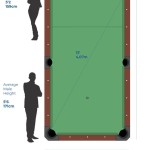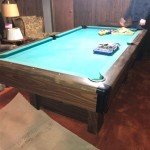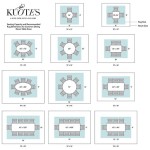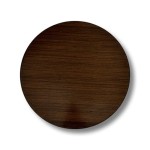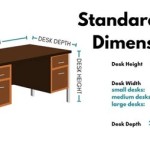The Allure and Practicality of Rectangular Glass Pedestal Dining Tables
The rectangular glass pedestal dining table represents a significant departure from traditional dining table designs, offering a blend of modern aesthetics and functional elegance. This type of table distinguishes itself through its primary materials and construction: a rectangular glass tabletop supported by a single, central pedestal base. The marriage of these elements creates a visually striking piece of furniture that can serve as the focal point of any dining room. Understanding the nuances of glass composition, pedestal design variations, and considerations for size and placement is crucial for selecting the right table to complement a specific space and lifestyle.
The appeal of rectangular glass pedestal dining tables stems from their ability to create a sense of spaciousness and airiness. The transparent nature of the glass allows light to permeate the space, making smaller rooms appear larger and more open. Moreover, the single pedestal base eliminates the visual clutter often associated with traditional four-legged tables, contributing to a cleaner and more minimalist aesthetic. This design choice also offers practical benefits, providing unobstructed legroom for diners and facilitating easier movement around the table.
Understanding the Materials: Glass and Pedestal Base Options
The quality and type of glass used in the tabletop are paramount to the table's durability and safety. Tempered glass is the most common and recommended choice for dining tables due to its enhanced strength and resistance to breakage. Tempered glass undergoes a heat treatment process that makes it four to five times stronger than annealed glass. In the event of breakage, tempered glass shatters into small, blunt pieces, reducing the risk of serious injury. The thickness of the glass also plays a role in its structural integrity; thicker glass, typically ranging from ½ inch to ¾ inch, provides increased stability and can support heavier loads.
The pedestal base provides crucial support for the glass tabletop and significantly influences the overall style of the table. Pedestal bases are available in a variety of materials, each offering unique aesthetic and functional characteristics. Metal bases, often crafted from stainless steel, chrome, or powder-coated steel, offer a sleek and contemporary look. These materials are known for their durability and resistance to corrosion, making them suitable for long-term use. Wood bases, on the other hand, provide a warmer and more traditional feel. Hardwoods like oak, maple, or walnut are commonly used for pedestal bases, offering both strength and visual appeal. The design of the pedestal base can range from simple cylindrical shapes to more intricate geometric forms, allowing for a wide range of stylistic expressions.
Acrylic or Lucite bases are gaining popularity for their modern and transparent aesthetic. These materials mimic the look of glass while offering greater flexibility in design and impact resistance. They are also relatively lightweight, making the table easier to move. Stone bases, such as marble or granite, provide a luxurious and substantial feel. These materials are incredibly durable and add a touch of sophistication to the dining space. However, stone bases are significantly heavier and may require professional installation to ensure stability.
The selection of materials for both the glass tabletop and pedestal base should be carefully considered in relation to the overall design scheme of the dining room. Coordinating the materials and finishes with existing furniture and décor will create a cohesive and harmonious aesthetic. Furthermore, the choice of materials will impact the table's durability, maintenance requirements, and overall longevity.
Size, Shape, and Spatial Considerations
Determining the appropriate size and shape of the rectangular glass pedestal dining table is essential for ensuring a comfortable and functional dining experience. The size of the table should be proportionate to the dimensions of the dining room. A table that is too large will overwhelm the space and impede movement, while a table that is too small will not adequately accommodate the number of diners. A general guideline is to allow at least 36 inches of space between the edge of the table and any surrounding walls or furniture. This provides sufficient room for diners to pull out their chairs and move around the table comfortably.
The rectangular shape is particularly well-suited for longer, narrower dining rooms. Its elongated form maximizes seating capacity along the sides of the table, while the single pedestal base allows for unobstructed legroom. This configuration is ideal for accommodating larger groups of people without creating a crowded or cramped feel. In smaller dining rooms, a rectangular table with rounded corners can help to soften the visual impact and create a more inviting atmosphere.
The height of the dining table is another important consideration. Standard dining table height typically ranges from 28 to 30 inches. This height is designed to accommodate standard dining chairs, ensuring comfortable seating for most individuals. When selecting dining chairs, it is crucial to ensure that the seat height is appropriately proportioned to the table height. A seat height that is too low will result in diners feeling cramped, while a seat height that is too high will make it difficult to comfortably reach the table.
Beyond the table itself, the surrounding space should be carefully considered. Lighting plays a critical role in creating an inviting and functional dining environment. A chandelier or pendant light positioned directly above the table can provide ample illumination for dining and create a focal point in the room. Wall sconces or recessed lighting can supplement the overhead lighting and create a more balanced and layered lighting scheme. Rugs can also be used to define the dining area and add warmth and texture to the space. A rug that is large enough to accommodate all of the chairs when they are pulled out from the table will help to anchor the dining area and prevent the chairs from scratching the floor.
Maintenance and Care for Longevity
Proper maintenance and care are essential for preserving the beauty and extending the lifespan of a rectangular glass pedestal dining table. Glass tabletops are susceptible to fingerprints, smudges, and scratches, necessitating regular cleaning. A soft, lint-free cloth and a glass cleaner are the best tools for maintaining a sparkling clean surface. Avoid using abrasive cleaners or scouring pads, as these can scratch the glass. A simple mixture of water and vinegar can also be used as an effective and eco-friendly glass cleaner.
The pedestal base also requires regular cleaning and maintenance, depending on the material. Metal bases can be cleaned with a damp cloth and a mild detergent. Avoid using harsh chemicals or abrasive cleaners, as these can damage the finish. Wood bases should be dusted regularly with a soft cloth to prevent the buildup of dust and grime. A wood polish or furniture oil can be used periodically to nourish the wood and protect it from drying out. Stone bases should be cleaned with a pH-neutral cleaner specifically designed for stone surfaces. Avoid spilling acidic substances, such as lemon juice or vinegar, on stone surfaces, as these can etch the stone and cause permanent damage.
Protecting the glass tabletop from scratches and impacts is crucial for preventing damage. Using placemats and coasters can help to prevent scratches and rings from forming on the glass surface. Avoid placing heavy or sharp objects directly on the glass, as these can cause chips or cracks. Regularly inspecting the table for any signs of damage, such as chips, cracks, or loose screws, can help to prevent minor problems from escalating into more serious issues. Tightening any loose screws and addressing any minor repairs promptly will ensure the table's structural integrity and prevent further damage.
In addition to regular cleaning and maintenance, seasonal care may be necessary to protect the table from environmental factors. In humid climates, wood bases may be susceptible to warping or swelling. Using a dehumidifier in the dining room can help to prevent these problems. In dry climates, wood bases may be prone to cracking. Applying a wood conditioner or furniture oil can help to replenish the moisture in the wood and prevent cracking.

Chintaly Rebeca Contemporary Rectangular Glass Dining Table W Steel Pedestal Base Dt Rct

Alan Glass Double Pedestal Dining Table By Porada Room Service 360

Stirling Centre Pedestal Dining Table

Marilyn Pedestal Rectangle Glass Top Dining Table Mirror Furniture Now Fl

Rectangular Glass Top Walnut Dining Table For Affordable Home Furniture Decor Outdoors And More

Coaster Marilyn Pedestal Rectangle Glass Top Dining Table In Mirror

96 Rectangular Glass Top Double Pedestal Dining Table Fdc4 Rgpt

115571s5g By Coaster Marilyn 5 Piece Rectangle Pedestal Dining Room Set Mirror And Grey Furniture Design Center

Magic Home 63 In Glass Top Rectangular Dining Table With Pedestal Base White Seats 8 Cs W39517209 The Depot

Prestige White Glass Stainless Steel Modern Rectangular Dining Table Sobe Furniture


